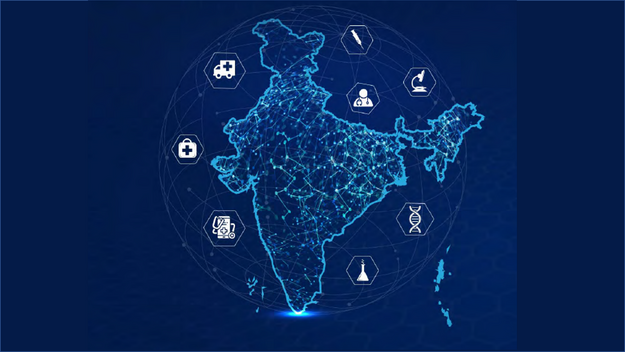5th Session of the Fintech for Health Special Interest Group held

“Sixty-three percent of the India’s total health expenditure is paid out-of-pocket as compared to the world average of just 18.2%. Fintech for Health can lessen this disparity”
ACCESS Health hosted the fifth session of the virtual Fintech for Health Special Interest Group (SIG) series on February 23, 2022. ACCESS Health created the Fintech for Health initiative with support from the Metlife Foundation to provide innovative solutions that enable low to moderate-income people in Asia to pay for and access high-quality care using digital financial services.
The Fintech for Health team in India continues to engage fintech and health tech players to share knowledge, resources and create new partnerships and models to support health financing for low and moderate income populations during these sessions.
Sixteen representatives from leading health tech, fintech, banks, non-profit organizations, and insurance companies participated. The objective of the fifth session was to showcase digital lending solutions supporting the healthcare needs of the patients, providers, and medical equipment dealers alike. Discussions spotlighted financing solutions offered by Arogya Finance and DigiSparsh.
Arogya Finance – Transforming healthcare affordability landscape for people in India
Arogya Finance is an innovative, healthcare-focused fintech that creates easy payment solutions for patients. Arogya Finance provides medical loans to the traditionally unbankable or underserved communities, using innovative risk assessment tools. In its efforts to transform the healthcare affordability landscape it presents a large market opportunity to support healthcare out-of-pocket expenses in India. Patients borrow from and repay Arogya Finance directly, leaving them free to get treated wherever they choose to do so. When a patient is diagnosed with a condition or disease, and if the patient or family cannot pay for treatment, they are referred to Arogya Finance through hospital partners.
Arogya Finance undertakes rapid screening and administers a psychometric test to determine the creditworthiness and risk-taking profile of the beneficiary. A decision is made and conveyed within 3 to 72 hours. If approved, care can begin immediately and Arogya Finance pays the hospital directly. The borrower repays the loan within a time frame of 3 – 36 months. All loans are managed on a cloud-based loan origination and management system
83% of percent of people are approved via the psychometric test with a default rate of only 3% for repayments. The discussion led to suggestions for Arogya Finance to possibly cater specific plans for different segments of society and provide loans to support insurance premiums.
DigiSparsh – Fintech Lending Solutions for the entire Value Chain of the Healthcare Ecosystem
DigiSparsh offers lending solutions, including insurance receivable financing, supplier financing, and patient financing. In short, it supports the entire value chain of the healthcare ecosystem.
- For Hospitals – Provides instant funding to the cashless claims’ payment of the hospital which otherwise takes 60 days to come from insurance players. DigiSparsh is trying to solve the problem of blocked working capital for the hospitals due to delayed settlement of cashless claims by funding the cashless treatment amount in just a few hours.
- Patients – Offers interest-free loans to patients who do not have insurance; and
- Suppliers – Offers lending solutions to the supply chain of the healthcare sector. This product provides an instant payment option to consumable/medical equipment suppliers of the hospitals.
Additionally, DigiSparsh is opening doors for Jan Dhan account holders to set up self-check health kiosks for the customers and provide an outpatient teleconsultation product through those health kiosks.
Unequal access to finance solutions has led to unequal access to healthcare: With the low rates of insured populations in India, a person spends three times the typical hospitalization expenses for pre and post-hospitalization expenses. Sixty-three percent of the India’s total health expenditure is paid out-of-pocket as compared to the world average of just 18.2%.
This Special Interest Group fifth session looked into the potential use of Fintech for Health models and how these can expand to unreached populations. Post-pandemic out-of-pocket expenses to meet medical emergencies have shot up drastically, forcing people to resort to unorganized debt markets. Digital Lending services such as Arogya Finance and DigiSparsh are some of the products that can address a small gap to reduce out-of-pocket expenditure.
- The global pandemic is an opportunity to accelerate digital financial solutions for health: The global COVID-19 pandemic has resulted in an enormous global reprioritization of digital financial services in the health sector. Fintech companies are now aware of how public health impacts global markets and are looking for new business opportunities which can meet the immediate healthcare needs of the mass population who do not have other avenues of financial resources to cover for unexpected healthcare costs.
- Digital Financial Services do not yet fully bridge the digital divide: There is evidence that digital financial services can reach and serve a proportion of vulnerable populations (women, rural, adolescent, low-income). However, even in the most advanced digital financial services ecosystems, there are still disparities in who has access to and control over mobile accounts and technology. While digital approaches excel at creating operational efficiencies, they are not yet able to equitably reach potential beneficiaries, and their ability to convey information about complex financial and health concepts remains unclear, particularly in contexts where prepayment and pooling health financing mechanisms are still unfamiliar.
Remaining questions about the viability of digital lending to consider:
- What are some of the challenges with scaling digital lending solutions for the low-middle income population?
- What happens when the patient defaults in repayment of loans? What are the alternatives to such a problem?
- What happens when the interest rate is not 0%? Can the lending solutions still offer a loan for patients on a buy now pay later financing model or assess patients via alternative ways to evaluate creditworthiness?

